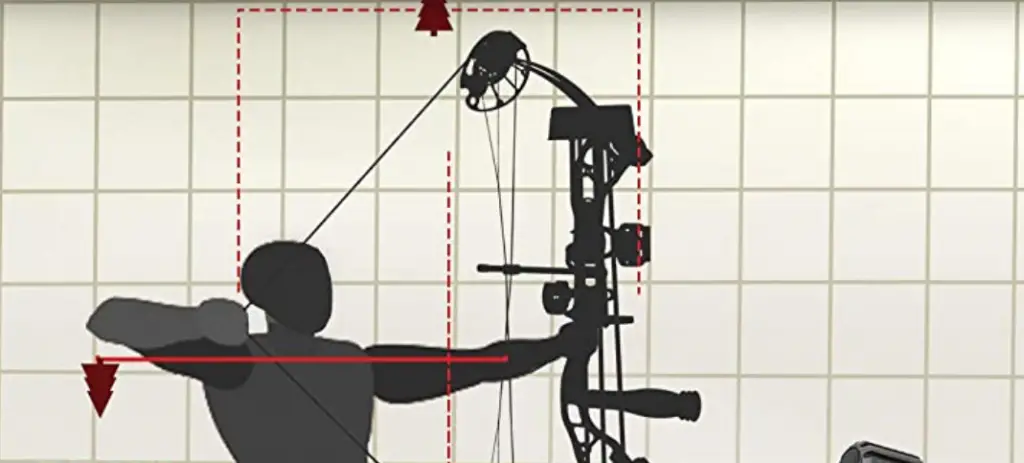Unlike traditional bows, where you can pull the bowstring to practically any distance, draw length in compound bows are fixed. Compound bows are designed to be easier to handle and offer customizations in comparison with traditional bows.
What is an ideal draw length?
Before you get into adjusting the length, the most important lesson is to understand the shoot’s purpose, which is for practice or hunting. Once we decide on the purpose, we can then go ahead and understand an ideal draw length and then further adjust it.
No rule defines a perfect draw length. It depends on individual size, height, weight, and strength. For a comfortable and smooth archery experience, you need to understand and adjust your draw length well. There is no such rule or method that helps you calculate draw length, but The Arm Span Method has been used by archers over many years. The optimal length is the length at which you get the best shoot.
- Stand against a wall with your arms stretched out against the wall.
- Determine arm span in inches with the help of a friend, measure the length between the tip of your middle finger to your opposite middle fingertip.
- Divide the length measure by 2.5, and you have your draw length.
For example, 75 is the length between your arms; subtracting 15 from it will give you 60, and you then divide 60 by 2, which will provide you with 30, your draw length. That’s how to measure draw length!
Why is it essential to adjust draw length?
The answer is simple, to ensure accuracy and stability. If the draw length is short, it will lead to inconsistency between shots. In case of a longer draw length, the archer’s posture will be affected, which will lead to an improper shooting form.
How to adjust the draw length?
There are few ways to adjust the draw length of your compound bow with adjustable cams.
- Locate the limb bolts near the center of your compound bow
- These bolts are generally locked into the riser, which is the central part of the bow that connects the limbs with other mechanical components.
- You can find the limb bolts below the top limb
- Tightening the bolts will increase your bow’s draw weight while loosening the limb bolts will reduce the bow length and weight.
- Test the bow
Draw Length Specific Cams
Draw length-specific cam bows deliver different lengths. For these cams, the archer can purchase the cam, which is numerically marked, and install it to change the bow’s draw length. The only restriction here is one might not adjust the length on their own; instead, they will require some professional help.
Modular Cams
These cams-specific bows are the most commonly found ones in the market.
The modular cams have specific draw-length modules that an archer can change by using a hexagonal wrench.
What is an ideal draw weight?
Draw weight is the maximum amount of weight that an archer needs to pull while drawing the arrow. It would be best if you matched the draw weight by your upper body strength.
– If the draw weight is heavy, you will lose the aim
– And if the draw weight is light, you compromise speed and velocity.
– Your draw weight also depends on the purpose of the shoot; hunters might want to use a heavier draw weight, whereas, for Archery competition, archers would like to use lesser weight.
Precautions while adjusting the draw length?
– Always keep the bow scale handy to check the draw weight
– When reducing the draw length, always begin with tightened set of limb bolts
– Remember to adjust the tension on the limbs equally
– Do not pull the limb bolt too much; it can break the bowstrings
– Ensure locking screws are safely secured; it will prevent bolts from disengaging
Quick tips and precautions
Each bow is different; practice and assess what works best for you
There cannot be one final draw length, and you might want to keep changing your draw length as you keep learning and keep gaining experience
Assess your adjustments, see how a certain level of tension works for you, then make changes to enhance accuracy and speed
If you get an opportunity to work and learn from a professional



